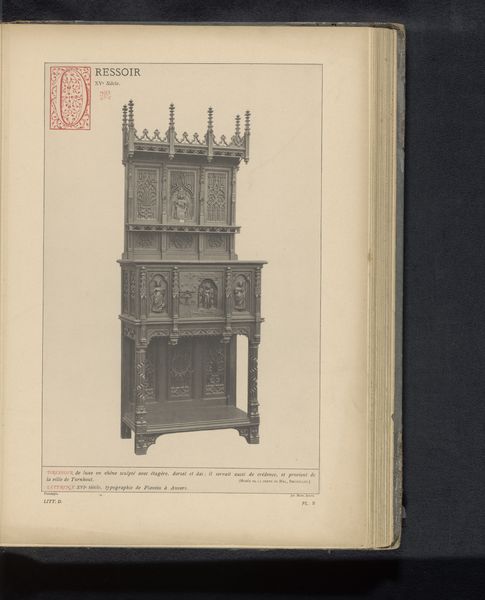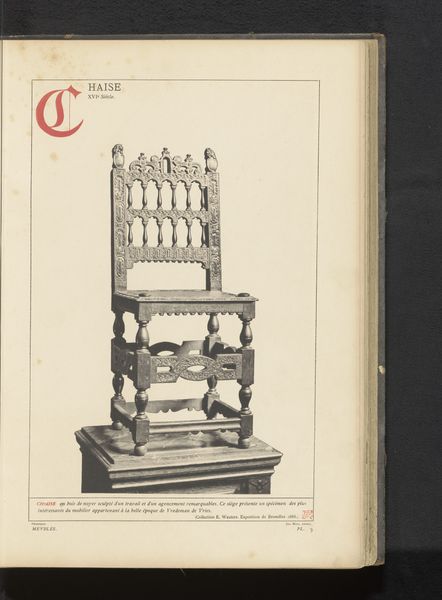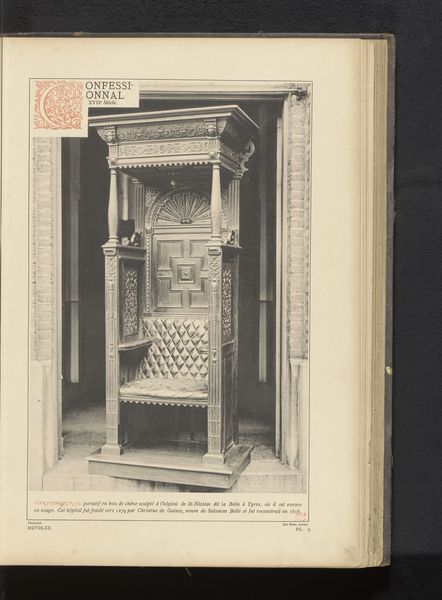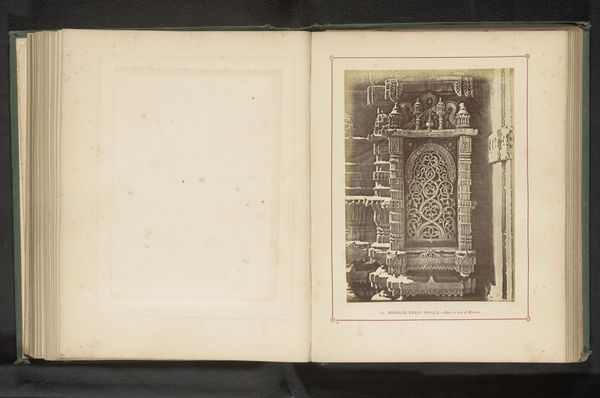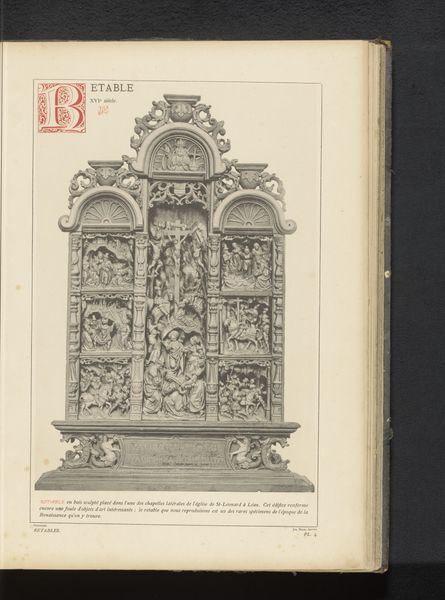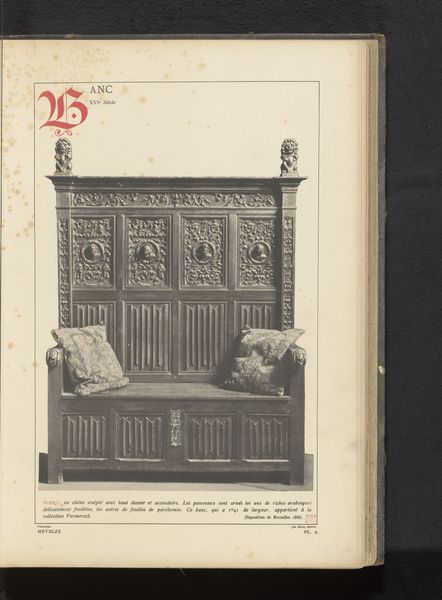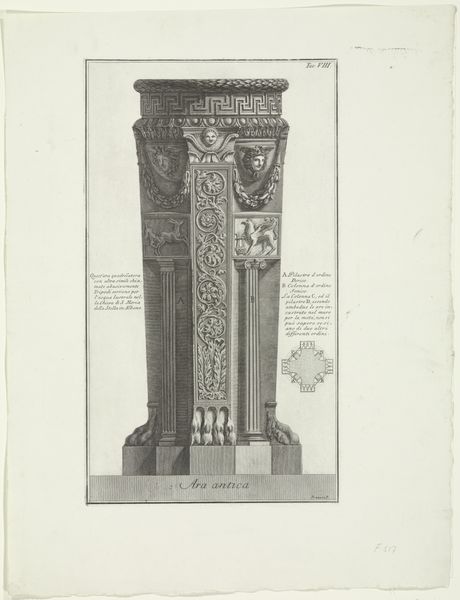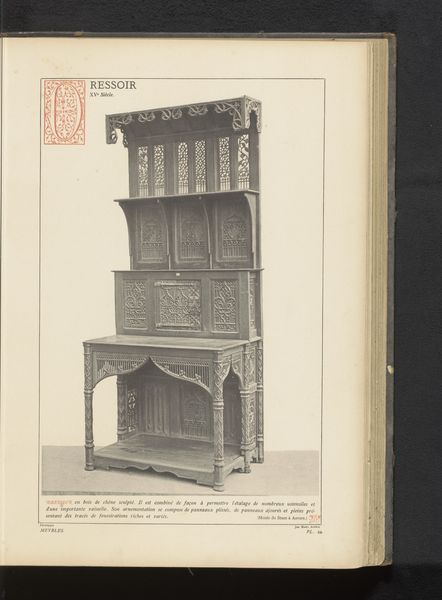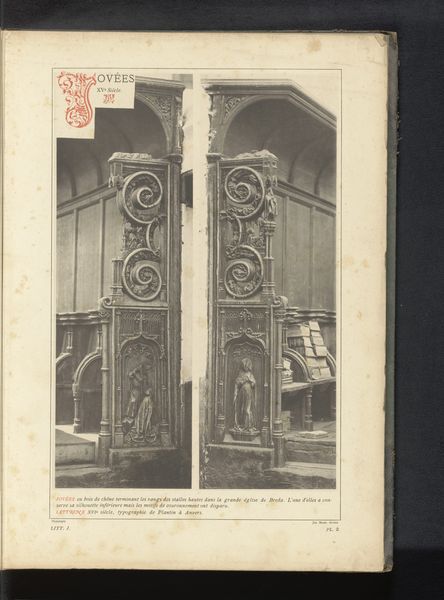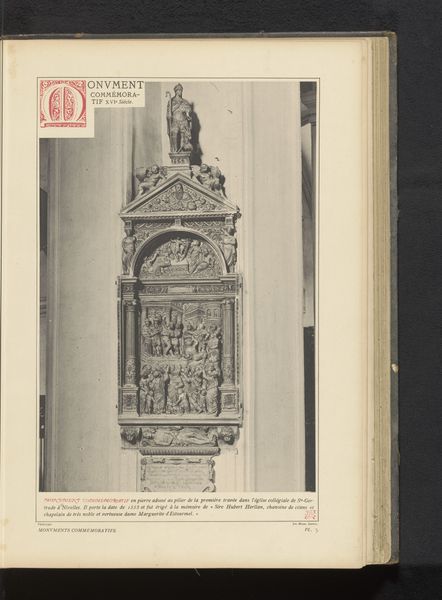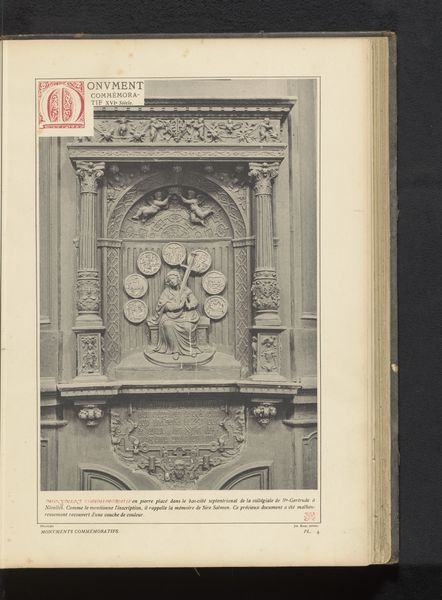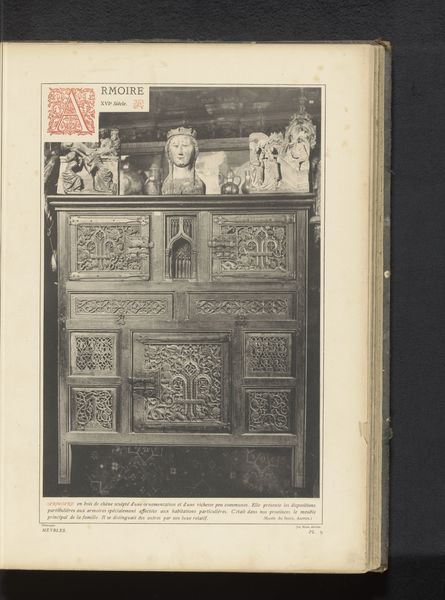
carving, print, wood
#
medieval
#
carving
# print
#
figuration
#
wood
#
decorative-art
Dimensions: height 320 mm, width 227 mm
Copyright: Rijks Museum: Open Domain
Editor: We're looking at an image of a Decorated Oak Chair from before 1887. It's hard to tell what the function of it is, but what jumps out at me is the intricate carving – almost every surface seems to be covered. How would you interpret this piece? Curator: What I observe is how the piece engages with verticality. Note the sharp upward thrust of the back, how the carved panels echo this, each geometric form contained but directed upwards. Even the crest rail seems to be striving. Ask yourself, what effect does this emphasis create? Editor: I guess it gives it a sense of authority or importance. Like, this wasn’t just any chair, and the person who sat in it had authority. It feels very purposeful. Curator: Precisely. And consider how the artist manipulates positive and negative space. The geometric carvings, deeply cut, establish a compelling rhythm. Are they merely decorative, or is there a system? Look at how shapes mirror, echo, and break. The composition suggests meaning beyond mere embellishment. Editor: That makes sense. So, by looking at the shapes and lines, without knowing its historical context, we can tell that the chair’s meant to represent something powerful. Curator: Yes, consider the material, oak – a choice heavy with connotations of strength and durability. The artist clearly intended the material itself to communicate inherent qualities. This interplay of material and form contributes to a complex and thoughtful statement. Editor: I didn't even think about the material itself speaking! I see now that the chair is far more than just a chair; it is carefully constructed and carries deeper messages. Curator: Exactly, understanding how materials contribute enhances the overall interpretation. It deepens the meaning, allowing us a richer appreciation for such works.
Comments
No comments
Be the first to comment and join the conversation on the ultimate creative platform.
